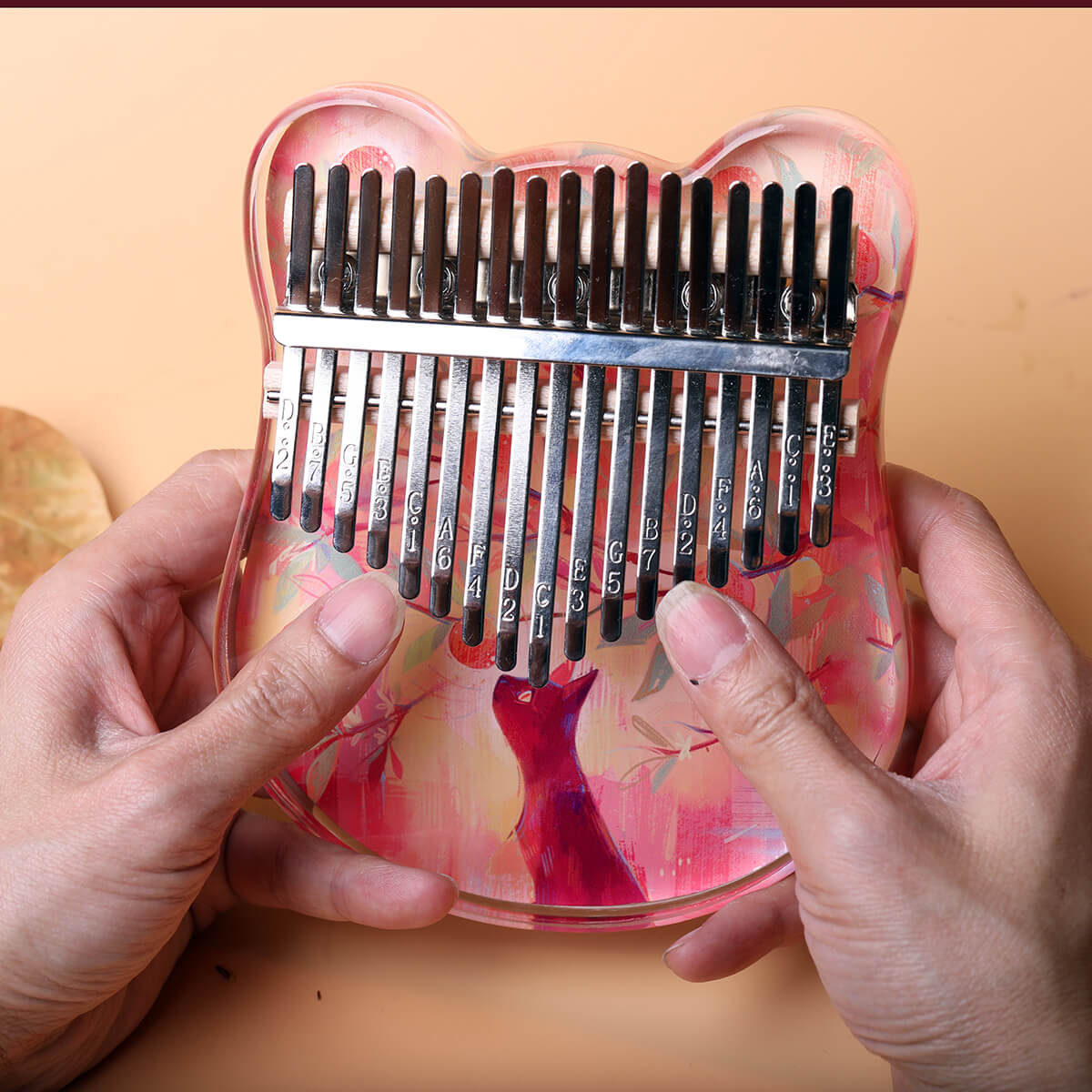
The kalimba is a unique instrument that can be enjoyed by musicians of all levels. Whether you’re just starting or you’ve been playing for years, there are 3 kalimba skills you need to know to get the most out of your kalimba: Double Tone Sound, Glissando sound, and Wah Sound. In this blog post, we’ll go over each one and provide tips on how to improve your skills. Let’s get started!
Learning how to play the kalimba can be a very rewarding experience. The kalimba, also known as the thumb piano, is a Chinese folk instrument consisting of metal strips attached to a wooden board. Each strip is tuned to a specific note so when struck with the thumbs, it produces delightful and unique tones that give life to any melody. To begin playing the kalimba, tuning is key – your strip must be precisely tuned for each note to resonate correctly. Connect the thumb rods or tines on the bottom side and tighten them until they are secure and won’t move when you pluck the opposite ends on top. Next up is pressing each tine in sequential order for an octave scale and gradually getting comfortable pressing down with your thumbs. You can start by learning basic scales, chords, and melodies as you become more familiar with the instrument’s sound variations. As you get more accustomed to strumming and pressing, your fingertips will also become stronger and you’ll learn hand techniques like damping notes at different points during your playback. Whether it’s soothing ambient music or simple nursery rhymes – there are endless possibilities for what one can compose with the kalimba so go ahead and have fun exploring!
Learning to play the Double Tone Sound on a kalimba can be a great source of entertainment, relaxation, and enjoyment. The Double Tone effect is produced by playing two different notes on two competing tines of the same kalimba at the same time – one from each thumb. To begin, it may be helpful to set one finger on the first tine – for example, Index Finger and then hold down with your left thumb over that note. Then rest your thumb next to your index finger similarly to your ring finger, but slightly higher than that first note you placed with the index finger. To produce Double Tone sound, move both thumbs away together in a downward and sideways motion at the same time. This rapidly alternating up and down motion will enable Double Tone sound by enabling both tines (notes) played by each thumb to vibrate. Keep in mind that you should keep moving your thumbs down very quickly to get a Double Tone sound instead of just holding them still in place. Double-Tone is one of the basic techniques used in traditional kalimba styles such as mbira (thumb piano), sanza(African-style hand held xylophone), or diatonic kalimbas such as Hugh Tracey’s Kalimbas . This technique helps you achieve a loud volume for louder parts of the song or piece you are playing and also allows for experimenting with contrasting light and dark tones which give interesting depth variations within individual pieces or songs being played. So experiment away―creating oddly beautiful harmonies with Double Tones! With practice, you too can learn to master Double Tone sounds on Kalimba!
Learning how to play the glissando sound on a kalimba can be both fun and challenging. Glissando sounds are created by sliding one’s finger, pick, or stylus along the tines of the kalimba while allowing them to vibrate. To produce this sound on the instrument, first, you must find a comfortable playing posture as performing this technique requires fast and precise movement. After identifying the desired sounding tines and placing your fingers or picking lightly on top of them without depressing them too heavily, hold lightly and take a deep breath before gliding your finger across all the desired notes quickly yet with enough control so that they all sound at once. Glide up in the direction of arrows between two tines to ascend in pitch, or glide down to descend in pitch. Glissando effects give you playing an additional jazzy flavor that can make your music more exciting and add depth to slower songs; practice until you master it! With patience and practice, anyone can learn how to play the glissando sound on a kalimba.
Play with your thumb in the front sound hole, pushing back and forth into the tone control to produce the wah wah sound. If it is not easy to play the wah sound with your thumb, use your two middle fingers to flick on the sound hole at the back to produce the wah effect. With skill, you can work back and forth and the wow effect will be more pronounced.
If you’re new to the Kalimba, these three skills are essential for starting your musical journey on the right foot. With some practice, you’ll be well on your way to becoming a pro in no time. Do you have any other tips for beginners? Share them with us in the comments below!
Read more